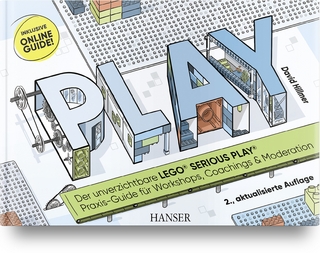
Making the Grade
Kendall/Hunt Publishing Co ,U.S. (Verlag)
978-1-7924-0786-4 (ISBN)
- Titel nicht im Sortiment
- Artikel merken
New Publication Now Available!
In the working world, public speaking is one of the most important skills to have. Without it, it's impossible to form connections, influence change, and motivate others. The ability to stand up and deliver a clear, concise message can have enormous impact on your career path and level of success in your industry.
One of the worst things you can do when giving a presentation is ""wing it"". You'll look bad, sound bad, and worst of all - feel bad when it's over. You won't Make the Grade with a subpar presentation. The very common excuse of nervousness for poor performance (it's called glossophobia), won't cut it in today's business environment.
This workbook helps you succeed from start to finish when giving a presentation, whether it's in the classroom or in the conference room at your internship or job. It helps you prepare, practice, and deliver a 5-minute project update, and it helps you prepare, practice, and deliver a 45-minute report on organizational development.
Preface
Acknowledgments
About the Author
Contributors
Part 1 Handling Nervousness
Anxiety is anxiety is anxiety
Why does my stomach hurt when I get ready to speak?
Am I the only one who feels this way?
How do I get rid of these feelings?
Building speaker confidence
Part 2 Planning Your Presentation
Take a Quiz on Speaking Awareness
Step 1: Brainstorm for Topics
Create a Cognitive Map
Limit Your Topic With a Second Cognitive Map
Step 2: Know the 3 P's (People, Place, and Purpose)
Who is your audience? (people)
Ask questions first
Sample preprogram questionnaire for audience members
Audience attitudes toward being there
Remember the WIIFM
What Are The Logistics? (Place)
Physical space
Timeline
Context
What is Your Goal? (Purpose)
Informative and persuasive purposes
Step 3: Develop Your Thesis
The Difference Between a Purpose and a Thesis
Step 4: Identify Main Points
How Do You Identify Main Points?
Write this down
Prioritize Your Information
Create a Rough Copy Outline
Sample Rough Copy Outline
First possible main point in support of thesis
Second possible main point in support of thesis
Third possible main point in support of thesis
Presentation topic
Step 5: Research for Supporting Materials
Begin With What You Already Know
Types of Supporting Material
Print Sources
Electronic Databases
Internet Sources
Types of Verbal Supporting Materials
Citing Sources in Your Presentation
Step 6: Organize Your Content
Basic 3-Part Organization Pattern
Quiz On Identifying Parts of a Presentation as Introduction (I), Body (B), or Conclusion (C). Fill in with I or B or C:
Organizational Patterns for Informative Presentations
Organizational Patterns for Persuasive Presentations
Step 7: Plan the Introduction and Conclusion
The 4-Part Introduction
Types of Attention-Getting Openings
Introduction
The 3-Part Conclusion
Types of Memorable Second Closes
Conclusion
Speech transitions
Using Notes and Writing a Final Speaking Outline
Speaking Outline Sample
Step 8: Practice
Presentation Checklist
Part 3 Delivering Your Presentation
Identify Audience Types: A Prerequisite to Selecting the Best Delivery
Select the Best Delivery Method
How You Look: Visual Signals
Dress and Grooming
Eye Contact
Posture and Movement
Gestures
Facial Expression
How You Sound: Vocal Signals
The Five ""P's"" of Vocal Variety: Pitch, Punch, Pause, Pace, and Passion
Avoid ""Power-Robbers""
What You Say: Verbal Signals
Who Would You Rather Listen To?
Conversational Style
Descriptive, simple language
Strong verbal transitions
Interpret your data
Avoid tag questions
Avoid qualifiers
Avoid trigger words
Avoid buzzwords, clichés, and jargon
Avoid slang and cursing
Proper grammar
Power words
Handling Questions
Essential Rules For Handing Questions
How to Answer When You Don't Have an Answer
Part 4 Presenting with a Team
Teams in Tandem
Take a Quiz on Team Presentation Awareness
The Tug-of-War in Team Presentations
Team Presentation Mistakes and Fixes
Planning and Practicing Your Team Presentation
Plan as a Team
Work in a ""Theme""
Finding a Theme
Practice as a Team
Let's talk timing
Balancing Speakers
Other Elements of Team Presentations
Have an Anchorperson
Use Transitions Between Speakers
Write your transition
Choreograph Your Presentation
Prepare for the Q and A
Section Summary
Team Presentation Checklist
Part 5 Types of Business Presentations
The Persuasive Presentation
Take a Quiz on Persuasive Speaking Awareness
Types of Persuasive Presentations
Persuasive speaking characteristics
Factors that affect persuasion
Strategies for Persuading
Logos: Use Evidence and Reasoning
Pathos: Use of Emotion
Ethos: Use Your Competency, Credibility, and Charisma
The Elevator Pitch
The 10-Second Introduction
The 30-Second Professional Pitch
The 3-Minute Sales Pitch
The 3-Minute Sales Pitch Planning Page
The Executive Briefing
How to Organize an Executive Briefing
The Technical Report
Impromptu Speaking at Meetings
Framing Your Message on-The-Spot
Giving information
Giving your opinion
The Virtual Presentation
Why Virtual Presentations Need Your Attention
The 3 P's of Virtual Presentations
People: Who are you presenting to virtually?
Place: Th e place of your virtual presentation
Purpose: What is the purpose of your presentation?
Preparation Checklist for Virtual Presentations
Speaking at Special Events
Speaking From a Stage
Introducing Other Speakers (or Yourself!)
Step by Step Formula For Introducing a Speaker
Sample Speaker Profile Questionnaire
Sample Speaker Introduction
Part 6 Preparing Quality Visual Aids
Take a Quiz on Visual Aid Awareness
Functions of Visual Aids
Put Your Presentation Together First
Types of Visual Aids
General Guidelines for Visual Aids
Focus on the Audience During Your Presentation
Strive for Professionalism
Strive for Simplicity
Strive for Clarity
Prepare for Possible Problems
Using Visual Aids in Your Presentation
Requirements for Constructing Visual Aids
Structured vs. Free-Form Slides
Additional Requirements for Construction
Options for Low-Tech Visual Aids that Stimulate Multiple Senses
Part 7 Handling Challenging Audiences
Setting the Tone and Building Rapport
Handling the ""Expert""
Handling The ""Hostile""
Handling the ""Stage Hog""
Presenting to an International Audience
Language
Body Language
Time
Emotion
Delivery Style
Use of Technology
Using an Interpreter
Content
Audience Participation
International Presentation Checklist
| Erscheint lt. Verlag | 30.1.2020 |
|---|---|
| Verlagsort | Iowa |
| Sprache | englisch |
| Themenwelt | Sachbuch/Ratgeber ► Beruf / Finanzen / Recht / Wirtschaft ► Briefe / Präsentation / Rhetorik |
| Wirtschaft ► Betriebswirtschaft / Management | |
| ISBN-10 | 1-7924-0786-6 / 1792407866 |
| ISBN-13 | 978-1-7924-0786-4 / 9781792407864 |
| Zustand | Neuware |
| Haben Sie eine Frage zum Produkt? |
aus dem Bereich


